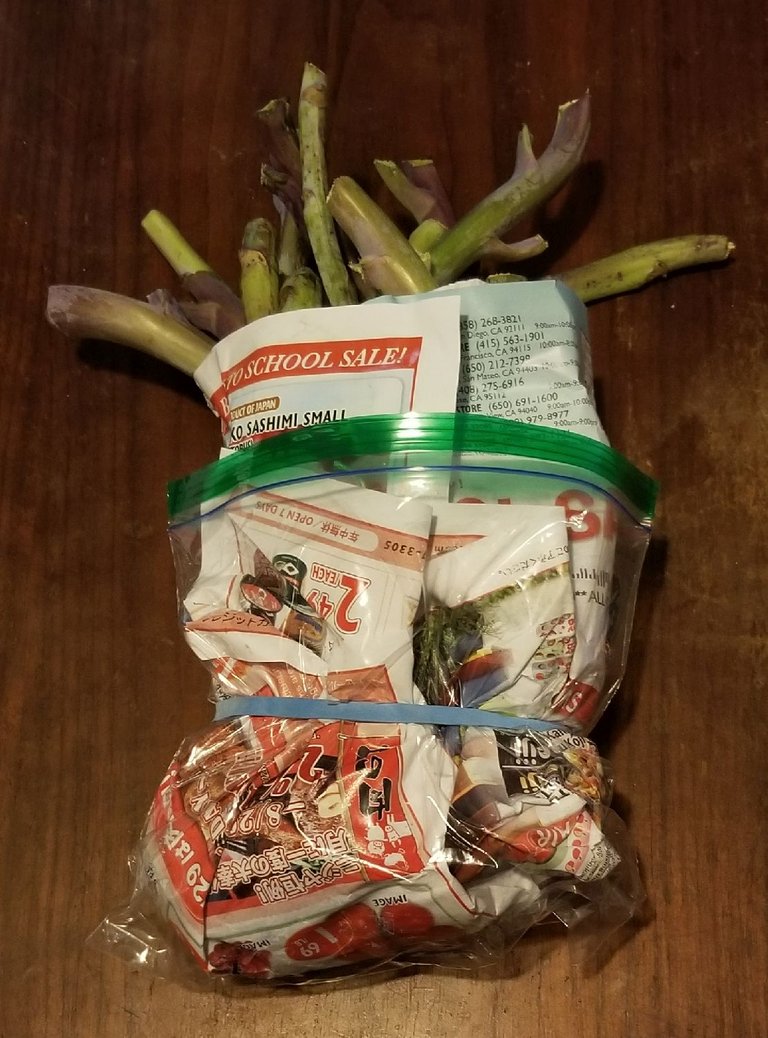
Purple Tree Collards
something I've wanted to try
for many years now!

I'm jazzed that I already received the cuttings of purple tree collards that I ordered a mere three days earlier, so I spent some time Sunday evening planting them.
This is more or or less how they arrived, wrapped in damp paper, wrapped in more paper, and finally wrapped in a ziploc bag rubber banded to hold in the moisture. And they arrived healthy and looking great!

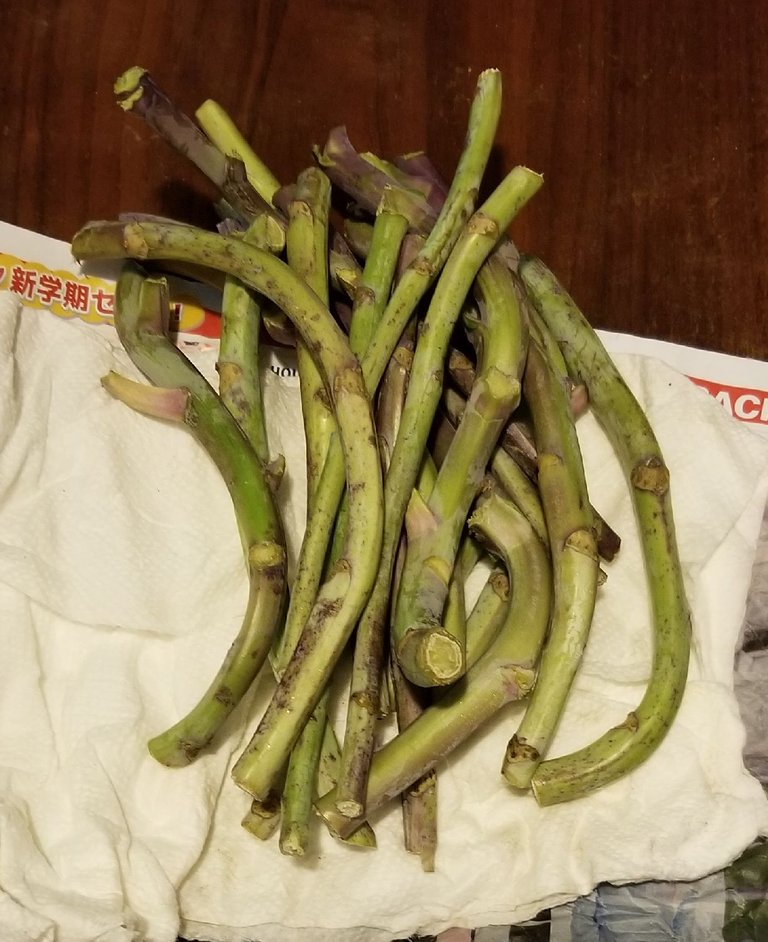
The cuttings once unwrapped and ready for planting.

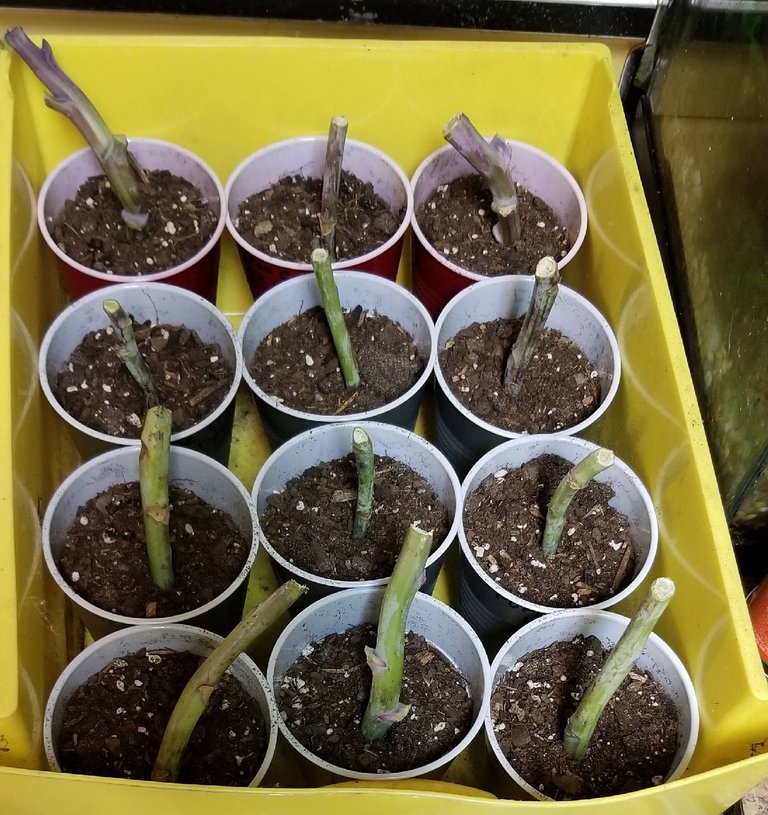
These are the twelve cuttings I ordered, once safely ensconced in their pots, to root over the winter.

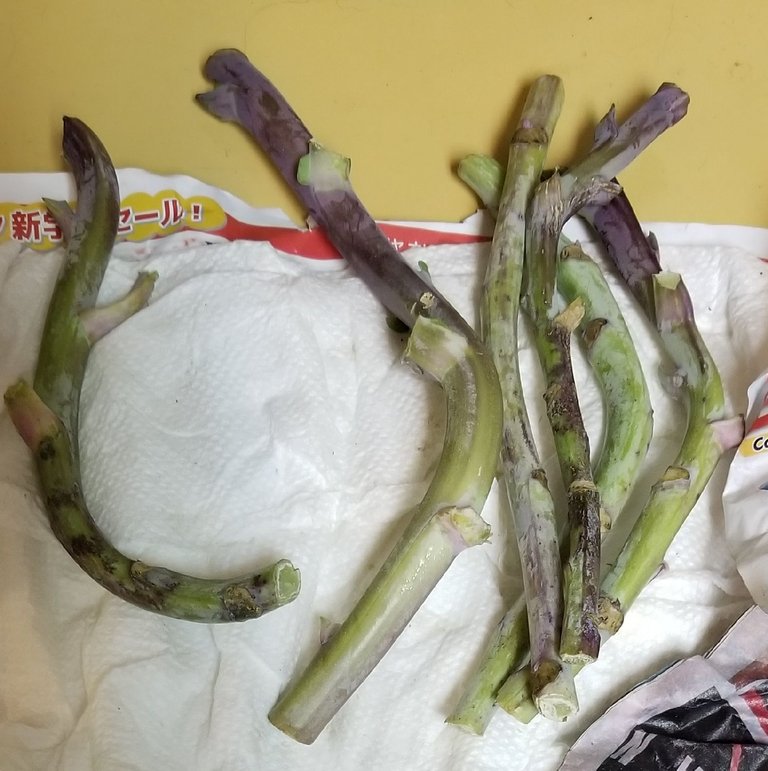
And bonus! The seller included six extra cuttings for us, which jazzes me more than I can say, as I've been wanting to grow these for years now!

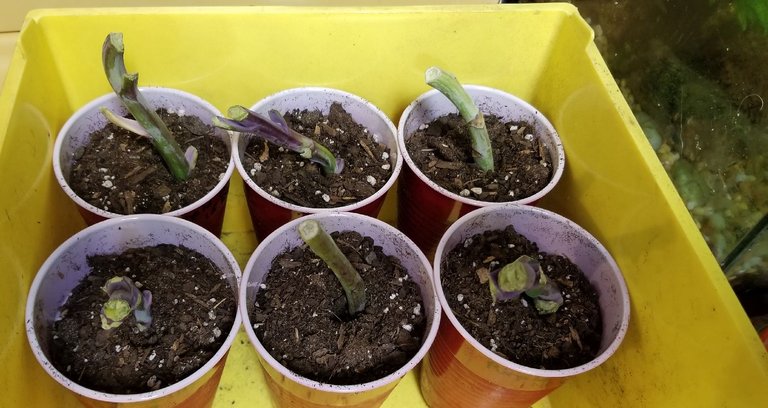
The six extra cuttings, once safely ensconced in their pots, to root over the winter with the others.

I've read conflicting information about purple tree collards, with some sources saying they'll survive in Zone 6b, which was the zone when we first moved here; some claiming Zone 7a, which is the zone we're now in since the USDA revised them a couple of years back; and no one seeming to have really definitive answers.
My plan is to start some along the south wall of the main house, which should give them some mitigation against the cold; some against the south wall of the studio, which should be a few degrees warmer and better protected from the wind, as it is in a hollow and protected by trees on all sides; and some out in the open, hopefully by then with adequate fencing to protect against the deer.
By trying them out in several microclimates, of which we have many on our place, I should get a much better idea of their actual benefits and limitations, how they perform in different conditions, and whether they can indeed be perennial in our climate. Here's hoping!

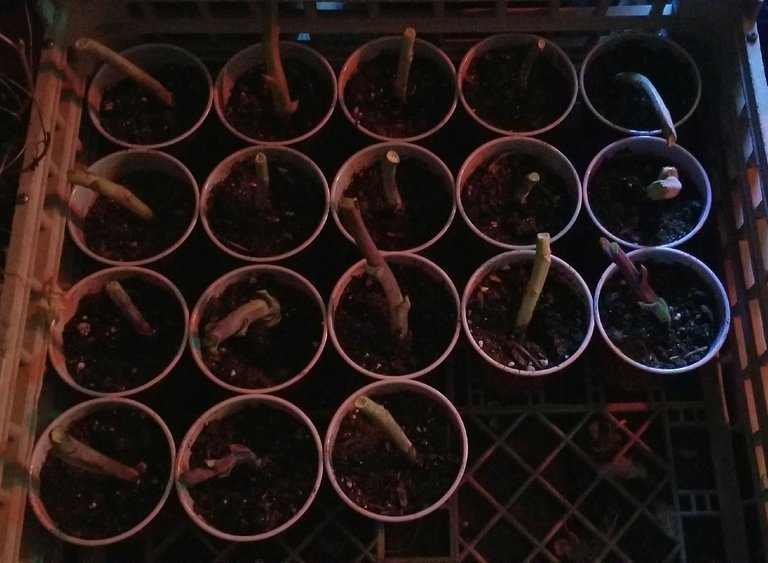
I'm also hoping to start walking stick cabbage this coming year, aka Jersey cabbage, but the seeds have yet to arrive, even though I ordered them far earlier than the purple tree collards.
Like tree collards, walking stick cabbage produces a large amount of edible greens, that can be used as food for humans and/or as fodder for animals. In fact, according to Wikipedia, "The Farmer's Magazine stated in 1836 that five plants would support 100 sheep or 10 cows, and sheep fed them were rumoured to produce silky wool up to 25 inches (64 cm) in length." That's a lot of cabbage!
This interests me a great deal, since I'd ultimately like to have sheep for wool and a milk cow or two, and having a high quality and extremely productive fodder source for them would be extremely important, and save us a great deal versus feeding purchased hay.
Further, according to an article in SF Gate, walking stick cabbage grows in hardiness zones 2 through 11, meaning virtually anywhere in the U.S., as well as most of the world.

Naturally, in the coldest climates, the growing season won't be long enough for it to reach the towering heights that it can reach in the Channel Islands where it is native, where it can reach as much as 18' to 20', or over six meters in height.
In fact, one of my biggest reasons for wanting to grow it is for the stout stalks, which for generations were indeed fashioned into walking sticks which were available only in the Channel Islands, and evidently highly sought after in their day.
As an organic gardener, I will clearly be ignoring the recommendations for using chemical fertilizers and pesticides, in favor of more earth-friendly methods.
The stalks were also used as fence posts and as building rafters, so they were stout indeed, though they needed to be hung to cure for a full year before being put into use for such purposes. As we have a fairly long growing season, I am hopeful that we can grow them quite tall, and experiment with many potential uses for them.

Since I've yet to grow them, and thus have no photos of them to share, I leave you with this portrait of our lovely moon, shining through the clouds over our Bradford pear tree, taken earlier tonight with my Samsung Note 8.
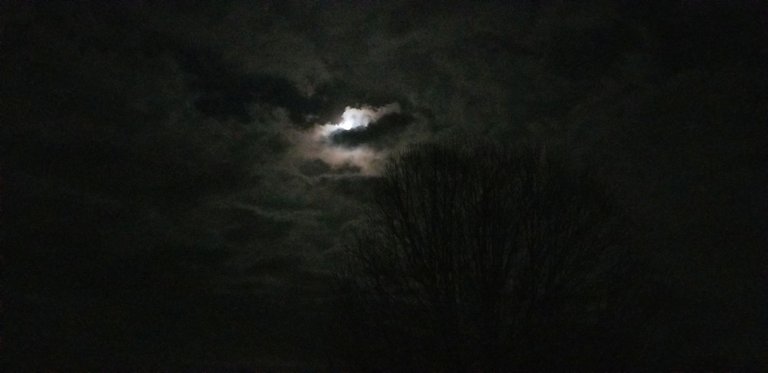
This post, and all those from now until the end of 2018, I am dedicating to the work of #tarc and #yah, aka @rhondak's nonprofit Appalachian dog rescue, and @sircork's international charity @youarehope.
Half the liquid proceeds earned from my posts will be evenly split between the two organizations, and more when I can manage it.
The photos above were taken by me, mostly earlier tonight, with my Samsung Note 8 smartphone.

#witch #witchhazel #haiku #tribegloballove #tarc #yah #ecotrain #thewritersblock #smg #ghsc #thirtydayhaikuchallenge #teamgood #steemsugars #teamgirlpowa #womenofsteemit #steemusa #qurator #steemitbasicincome #bethechange #chooselove #photography #neighbors #beauty #love #animals #dogs #rescue #adoption #spayandneuter #homesteading #permaculture #naturalhealing #dogrescue #dogsofsteemit #rabbits #animals #grace #poetry #philosophy #beablessing #naturalremedy #gratitude #abundance #give #family #peace #tranquility #giving #donating #philanthropy #naturalhealing #pets #cryptocurrency #culture #peacemaking #peacemaker #friendship, #warmth #self-respect #respect #allowing #turmeric #purpletreecollard #walkingstickcabbage #jerseycabbage




https://steemitimages.com/0x0/https://tinyurl.com/y93h9wt4

art and flair courtesy of @PegasusPhysics







Not a fan of leafy foods personally, but I would be interested to see how the walking sticks turn out😎
Posted using Partiko Android
Yeah, I'm really stoked to try my hand at them.
The downside is that they need a full year to dry before being worked, but the upside is that once completed, they can last generations, and I've seen some 50+ years old that didn't have a scratch on them. Incredibly strong stuff.
Posted using Partiko Android
How long would it take to grow @crescendoofpeace, and I am curious how will they look like.
Purple tree collards look a lot like regular collards, though they turn purple after a frost, so just imagine collards with a tall skinny stem, and that's a good approximation.
They are a fast-growing perennial, so if they are happy in a given location, they can easily grow to 4' to 6' in a season, or around 1.5 to 2 meters, though sometimes they can to 8' or more, or a bit under 3 meters.
Most of the people I know who grow them cut them back to about 4' to 6' at the end of the growing season, both to start new plants and to keep them more easily harvestable.
I'm really hoping that they will be reliably perennial in my climate.
Waking stick cabbage is generally treated as an annual, and I'm not certain if it would overwinter and continue to grow or not. I may have to overwinter a few inside and see, providing they don't get too tall to do so.
Posted using Partiko Android